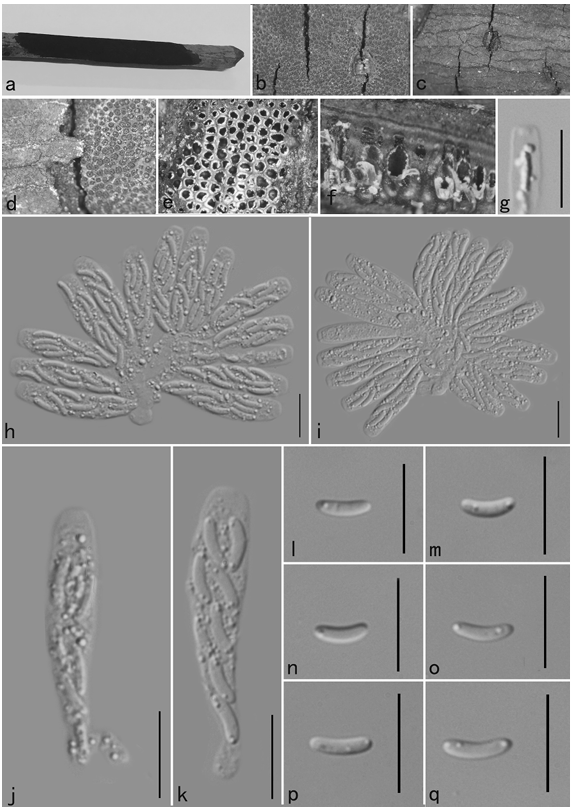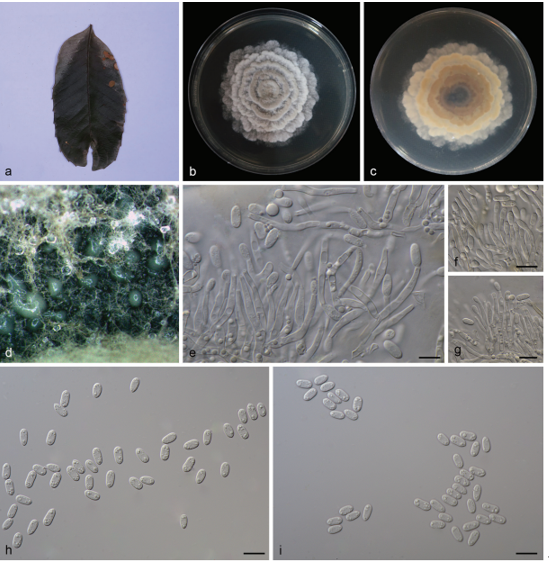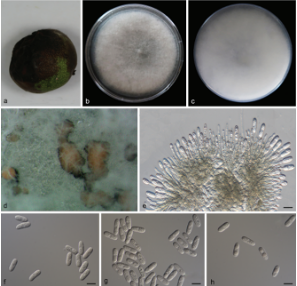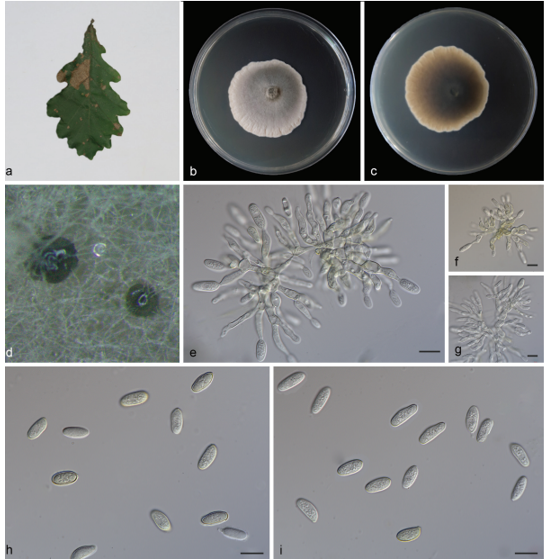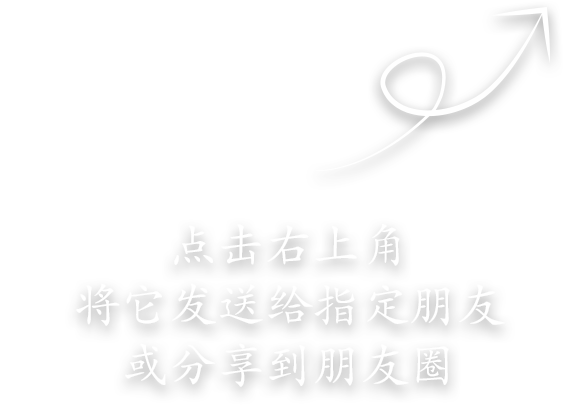Hygrocybe debilipes C.Q. Wang & T.H. Li, sp. nov. 2020
MycoBank No:836234
Holotype: China. Guangdong Province, Taishan City, Chuandao Town, Xiachuan Island, on a grassland, elev. ca. 50 m, 21°37'36"N, 112°34'30"E, 17 July 2017, H.
Huang, Q.J. Huang & X.R. Zhong (GDGM59314, holotype!).
Morphological description
Pileus 5–12 mm diam., conical with an acute umbo when young, convex to hemispherical in age, inrolled at margin, orange red (8A7–8), red to vivid red (9A7–8, 9B7–8), blackening with injury or aging, sticky when moist, hygrophanous. Lamellae free, pale yellow (4A3) to light orange (5A4) when mature, blackening with injury or aging, up to 4 mm broad, distant, waxy, with 1–3 unequal lamellulae between two entire lamellae, with lighter color at lamellar edge. Stipe 22–45 × 2–5 mm, central, cylindrical, equal or slightly tapered at apex, fistulous, semitranslucent, usually too fragile to obtain a complete stipe base, pale yellow (4A3) to light orange (5A4) with white base, blackening with injury or aging, glabrous to fibrillose, moist.
Basidiospores (7.5)8–11.5(12) × (4.5)5–7(7.5) μm [mean length = 9.4 μm, mean width = 6 μm], Q = 1.3–1.8, Qm = 1.6, ellipsoid to oblong, smooth, thin-walled, hyaline. Basidia 32–53 × 8–13 μm, 4-spored, clavate, with sterigmata up to 7 μm long. Pileipellis a cutis of cylindrical hyphae 2–11 μm diam., thin-walled, hyaline. Stipitipellis a cutis or ixocutis of repent, thin-walled, clamped hyphae 2.5–16 μm diam. Hymenophoral trama regular to subregular, consisting of parallel hyphal cells 4–17 μm diam., thin-walled, hyaline.
Habitat: on a grassland
Distribution: South China Sea islands.
GenBank Accession: ITS MW001783; LSU MW007877
Notes: Hygrocybe debilipes is morphologically and genetically a distinct species. Hygrocybe debilipes is characterized by its tiny basidioma, orange red to vivid red pileus, pale yellow to light orange lamellae when mature, fragile and semitranslucent stipe, and ellipsoid to oblong basidiospores measuring (7.5)8–11.5(12) × (4.5)5–7(7.5) μm. Hygrocybe debilipes forms a strongly supported independent clade in both ITS and LSU phylogeny trees (Figs 1–2).
Hygrocybe cinereifolia, originally described from France, is morphologically similar to H. debilipes in its general appearance. However, H. cinereifolia has larger basidiomata and grayish to gray lamellae (Courtecuisse 1992, http://www.pharmanatur.com/Mycologie/Hygrocybe%20cinereifolia.htm). Hygrocybe singeri, originally described from northwestern USA, is also morphologically similar to H. debilipes. However, H. singeri is larger (10–50 mm diam.), and possesses a yellow to orange pileus and greenish yellow lamellae (Hesler and Smith 1963).
Reference: Wang C-Q, Zhang M, Li T-H (2020) Three new species from Guangdong Province of China, and a molecular assessment of Hygrocybe subsection Hygrocybe.
Basidiomes of Hygrocybe species A Hygrocybe debilipes (GDGM59314) B Hygrocybe debilipes (GDGM57013)


